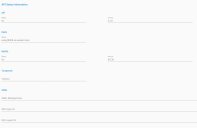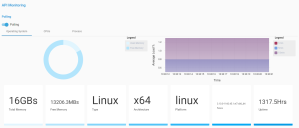API configuration
The API tab in the web admin user interface displays low-level information about the operation of the TrustPortal API server.
The following sections display:
- Status – Displays details on connectivity of the various dockers and services.
- Mailer – Displays parameters required to set up email gateways for user onboarding and allows users to set a test email if SMTP is configured.
- Monitor – Displays performance metrics of the system on which the API server is running.
- Sessions – Displays active user and digital worker sessions.
- Licenses – Displays the license details for your instance, for example renewal/expiry dates.
Status
Most of the components displayed here are set by the configuration in the API config.json file.
Mailer
The API mailer parameters are set by the API config.json file and are usually provided by an organization's system administrator.
Connecting TrustPortal to corporate email servers is only required if AD/SSO integration is not available. Simple email integration is possible by using the example process Onboard users with password and roles, where digital workers set up interim passwords and email them to the users.
Monitor
This displays the Linux server metrics on which the TrustPortal API runs. If users report slow performance, this is a very useful feature to check whether the Linux server is overloaded, for example high CPU and memory utilization.
Sessions
This page displays the active users logged into TrustPortal and the active digital workers that communicate with TrustPortal, which is a useful indicator of workload.
It is possible to delete a user session from this page, which will force the user to log in again.
Licenses
The license token is generated when the license is created based on the license ID and key details provided during installation.
 Docs
Docs




